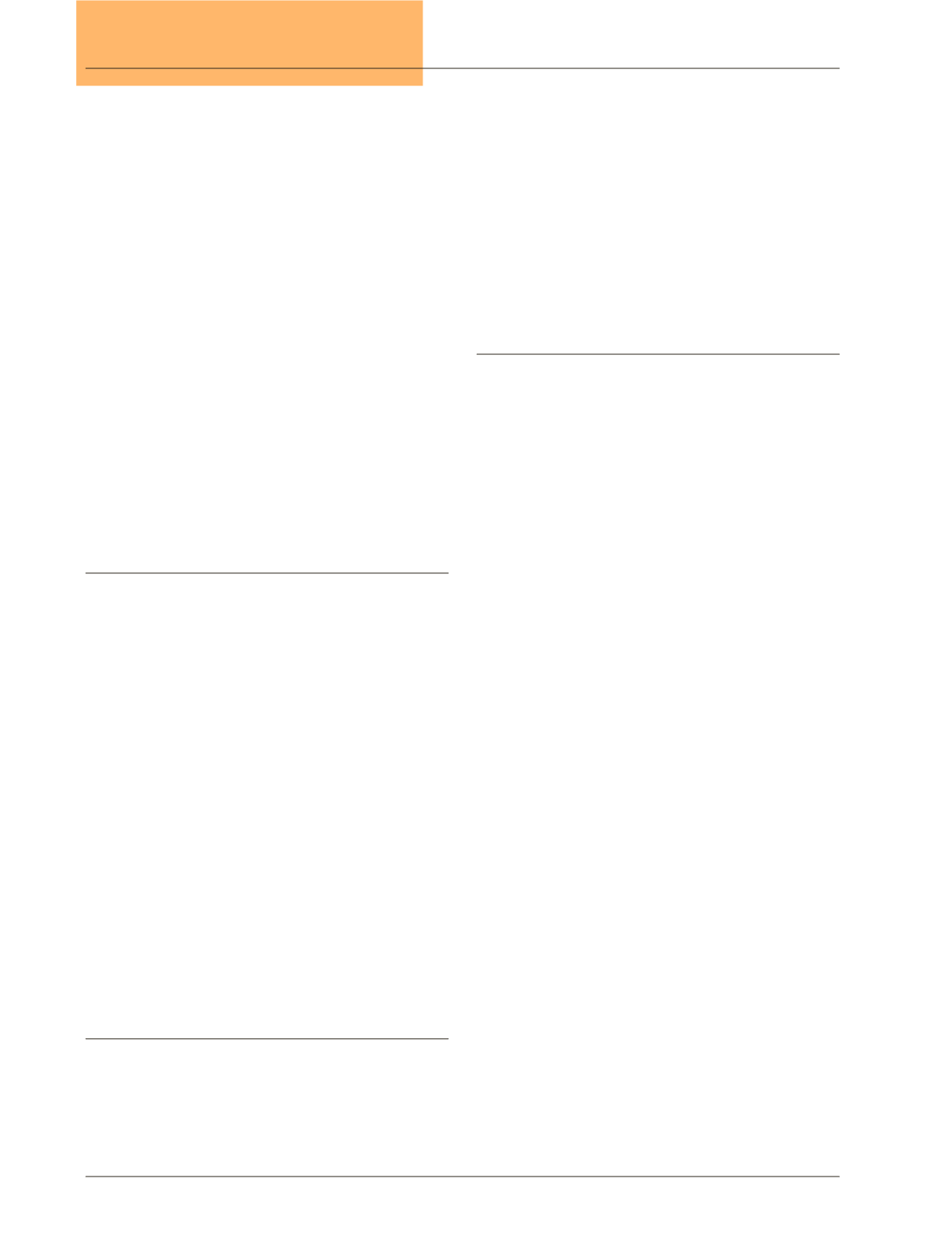
14
Vol. 66, No. 1 2015
Northeast Florida Medicine
Otolaryngology
Introduction
Pediatric Otolaryngology is one of the distinct subspecial-
ties within ENT. It is committed to the care of children with
a diverse group of age related, developmental and acquired
disorders. The specialty has evolved along with other medical
and surgical subspecialties as significant developments in
neonatology, genetics and anesthesia have occurred, as well as
advancements in endoscopic and surgical technology.
Problems common to all ages may require different
paradigms of evaluation and treatment in children than in
adults. As pediatric practitioners have been taught for years,
children are not simply little adults; this is clearly seen in
the different approaches to hearing loss and sleep disordered
breathing in children and adults.There are also limitations in
medication use and surgical technology in children because
of concerns about future growth and development. Despite
legislationmandates and funding changes, access to specialty
care is a continuing problem for children.
This update will outline the recent developments in
pediatric otolaryngology including discussion and practice
implications of new guidelines for otitis media, sinusitis,
tonsillectomy and obstructive sleep apnea.
Obstructive Sleep Apnea (OSA)
Sleep disordered breathing (SDB) and Obstructive Sleep
Apnea are a spectrum of illness and continue to be prevalent,
affecting one to four percent of children.
1
Several clinical
practice guidelines have beenpublishedby different specialties
adding to our information base, but they also offer sharply
conflicting recommendations.
2,3
For clinicians, this continues
tobe an area of confusion in evaluation and treatment options.
Controversy remains as to how best to manage these patients.
Polysomnography (PSG) for children is now readily
available with separate standards and equipment for pedi-
atric testing. Discussion continues on exact interpretation
criteria for severity of OSA, utility of REM findings and
relationship of central sleep apnea to overall illness. Nadir
oxygen saturation and end tidal carbon dioxide levels remain
very useful physiologic metrics in children.
2
PSG is described as the “gold standard” of testing, but is
ordered in fewer than 10 percent of children who eventually
undergo adenotonsillectomy.
4
Clinicians have considerable
reservation about the utility of this expensive and cumbersome
test for the evaluationof the routine, otherwise healthy, patient
with a clear history and physical findings of OSA requiring
adenotonsillectomy. In a recent survey of pediatric otolaryn-
gologists, only 10percent order sleep studies for SDB.Quality
of life surveys after adenotonsillectomy T/A for SDB or OSA
show significant improvement with or without sleep studies.
4
Polysomnography can be useful in the equivocal patient
when symptoms or physical findings are out of proportion.
PSG is recommended for the “at risk” child such as those
with Down syndrome, neuromuscular disease or craniofacial
dysmorphism.
4
PSG may be helpful as a predictor of severity
which may assist the operative team in management of nar-
cotics, anesthesia and placement as inpatient or outpatient.
Most practitioners treat even suspected OSA with additional
precautions. Local standards for care vary based on available
pediatric testing facilities, inpatient services and dedicated
pediatric anesthesia.
Home testing for OSA in children is not readily available
or reliable. Equipment issues have improved, but compliance
and financial concerns remain. Home sleep video with today’s
Update on Pediatric Otolaryngology:
New Techniques and Better Outcomes
By Andrew R. Simonsen, DO, FAAP
Bruce R. Maddern, MD, FAAP, FACS
Abstract:
Conditions involving the ears, nose, and throat effecting
the pediatric population generate a significant number of primary
care visits and subspecialty referrals each year. The most common of
these include adenotonsillar conditions, obstructive sleep apnea, otitis
media, hearing loss, and rhinosinusitis. The following review will
focus on the current recommendations for the diagnosis and treatment
of these conditions as they specifically relate to the pediatric popula-
tion. Key topics include indications for polysomnography in children,
current indications for adenotonsillectomy, indications for tympanos-
tomy tubes, the early diagnosis and treatment of sensorineural hearing
loss, and recurrent rhinosinusitis.
Address correspondence to:
Andrew R. Simonsen, DO, FAAP
Private practice, Pediatric Otolaryngology -
Head and Neck Surgery
10475 Centurion Parkway North, #302
Jacksonville, FL 32256


